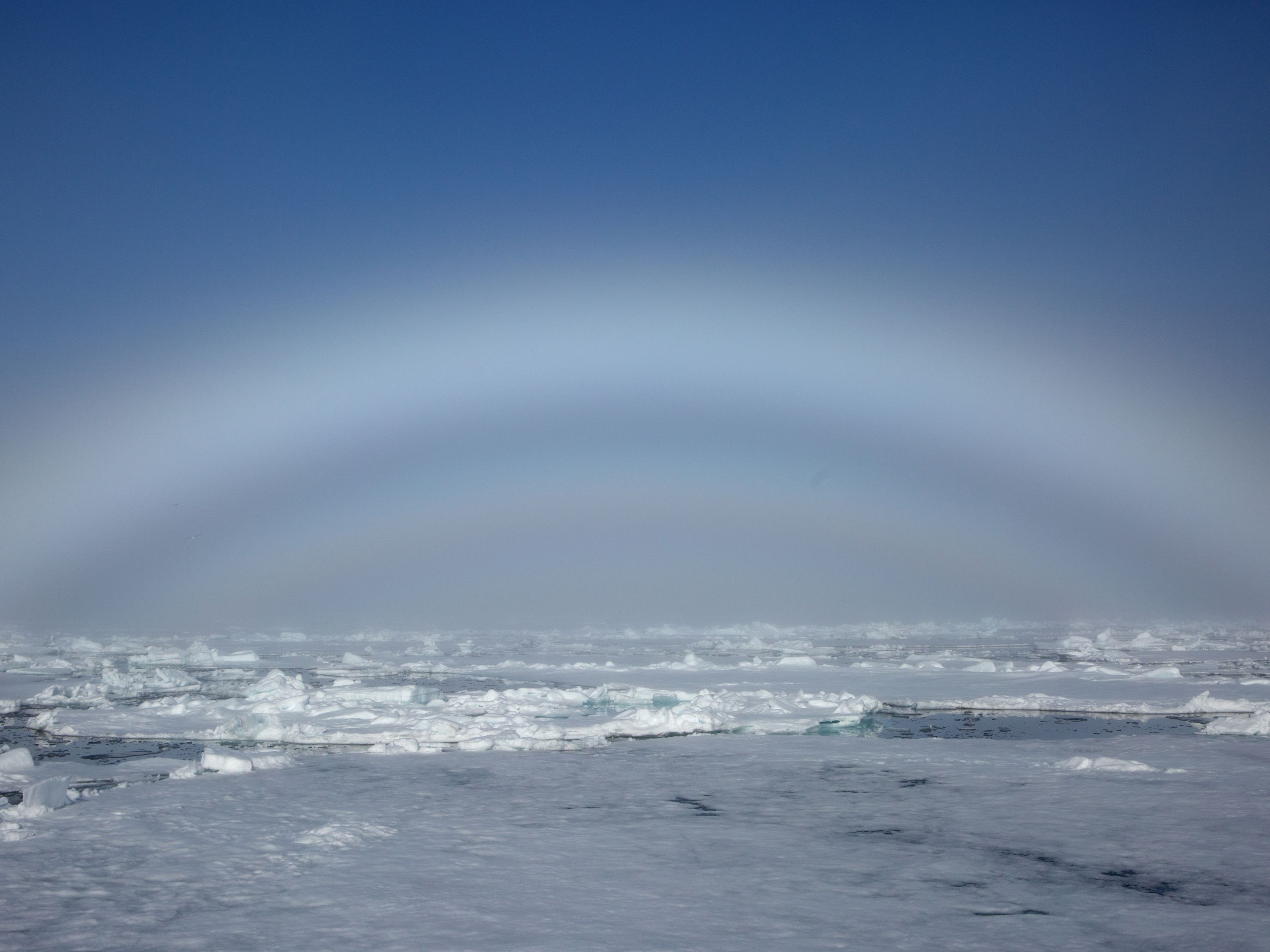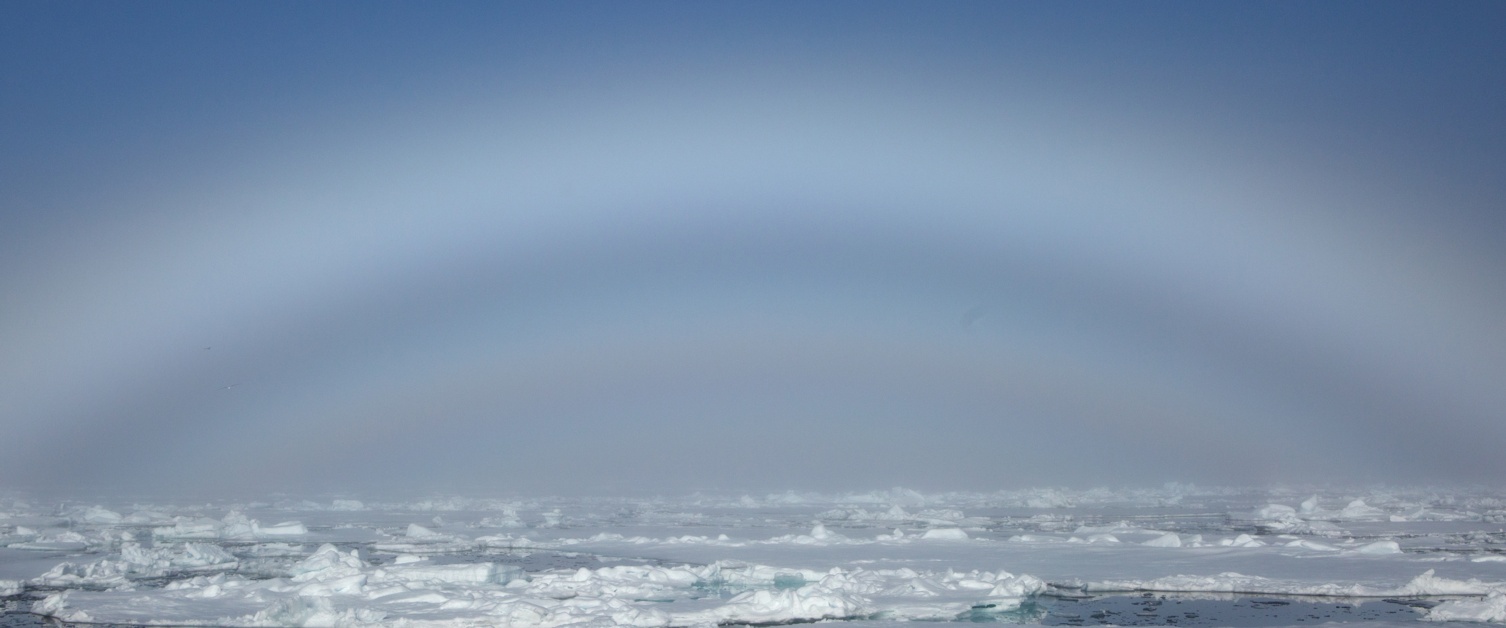Fogbow Over Pack Ice
- By Ellie Van Os
- Mar 14, 2024
NE of Moffen6C7A4863

In the arctic winter, the air is cold and the water is frozen and out of circulation, therefore the atmosphere is clear. With summer warming comes cracks in the pack ice. As the dark water is warmed by the atmosphere, water droplets escape into the atmosphere forming fog and clouds. This photo was taken north of the Norwegian archipelago of Svalbard in the Arctic Ocean in late June of 2023. This ship voyage was fifteen years after a series of expeditions I made to Svalbard from 2002 - 2008. Without actual data, I estimate it was several degrees warmer in late June/early July this past year, because that meant the difference between below freezing temperatures back then on the deck of the ship and mostly above freezing temperatures this past summer.
Rain is not the cause of a fogbow which is significantly paler than a rainbow but based on the same principle. It is formed by much smaller droplets than those that form rainbows. It is generally agreed that they are more likely seen when the sun is low on the horizon which means that in the mid and equatorial latitudes this would be in early morning or late evening. However, in Svalbard, in the vicinity of 75° - 80° North, the sun is relatively low even in the summer. This photo was taken at close to 1pm as fog was burning off in other areas of the ice pack. Although fogbows can form in many parts of the world, they are particularly dramatic when viewed with a field of pack ice that the Arctic offers as a foreground.
I never witnessed a fogbow during my work in the aughts and in light of temperature changes in the region with climate change, I suspect they are becoming more common. It is said that Arctic navigation of the future will have more concerns with fog than sea ice.
